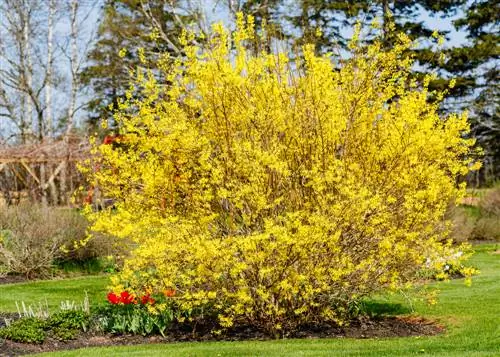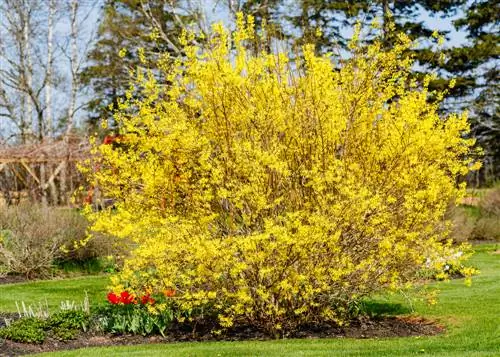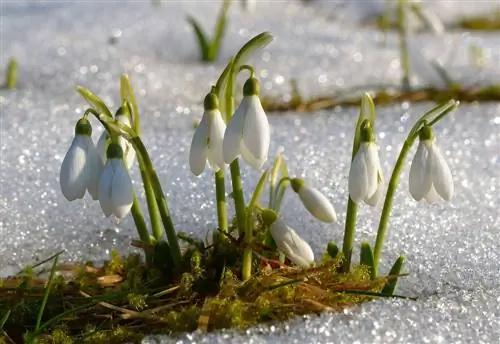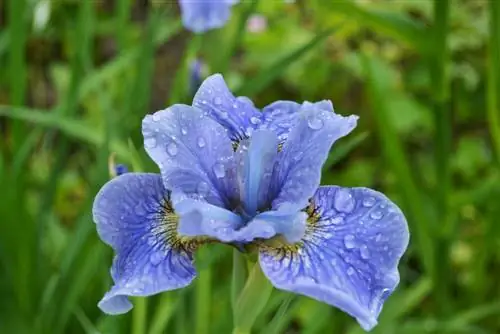- Author admin [email protected].
- Public 2023-12-16 16:46.
- Last modified 2025-01-23 11:21.
Bright yellow blooming forsythias are the epitome of spring for many garden lovers. The olive tree plants are not only extremely robust, they are also largely spared from diseases and pests.

Why is forsythia the plant of the month?
Forsythia is the plant of the month because it symbolizes spring with its bright yellow flowers from March to May. It is robust, hardy and easy to care for, grows up to three meters high and thrives in sunny to partially shaded locations.
Plant profile:
- Botanical name: Forsythia
- Other names: Goldilocks
- Order: Mint family (Lamiales)
- Family: Oleaceae
- Genus: Forsythia
- Growth: Initially tightly upright, later with arched overhanging main branches.
- Growth height: Up to three meters.
- Main flowering period: March to May
- Leaf: Medium green, elongated, simply opposite with serrated leaf edge
- Flower shape: bells
- Flower color: Bright yellow to golden yellow
Origin:
There are seven different species of forsythia worldwide, all of which are predominantly found in East Asia. The varieties native to our gardens are hybrid plants bred from Forsythia suspensa and Forsythia viridissima.
Location and care:
Forsythia prefers sunny to partially shaded locations. As a shallow-rooted plant, it thrives very well in acidic to alkaline soils; the lime content should be moderate.
Planting time
The best time to plant forsythia is from the end of March to October.
Watering and fertilizing
Watering is only necessary in very hot summers. However, make sure that the place where you place the spring bloomer is neither too dry nor permanently too moist, otherwise the roots will rot.
Additional fertilizer applications are unnecessary.
pruning
If you don't cut the forsythia back regularly, it will tend to age and lose its blooms over time. You should give the tree a topiary cut in spring at least every three years.
Propagation
Propagating forsythia is very easy. You can use the clippings directly:
- Defoliate a branch about twenty centimeters long.
- Put in the ground.
- By autumn a young crop will have formed that can be implemented.
In this way you can inexpensively grow enough trees for a whole hedge from a single bush.
Diseases and pests
Forsythia is a very resilient shrub and is pleasingly robust against diseases and pests. Very rarely you put
- Powdery mildew
- Monilia Triebwelke
- Bigmouth Weevil
- Aphids
to.
Winter protection
Since the forsythia is completely hardy, this can be dispensed with.
Tip
Goldilocks is slightly poisonous. Eating parts of the plant leads to nausea, abdominal pain and diarrhea. Therefore, make sure that children do not accidentally snack on the bright yellow flowers.






